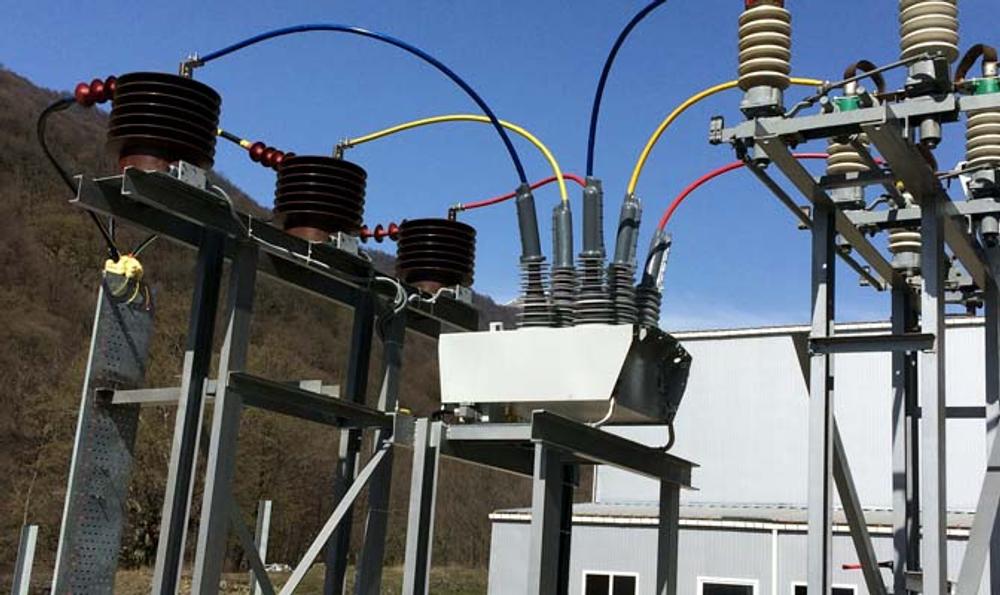Technical Article
Updated 12/2021
Understanding Fault Locator (ANSI 21 FL)
ANSI 21 FL Explained
Fault Finding:
As electrical engineers, maintaining customer power supply availability is a key performance metric. Electricity distribution customers expect a high level of reliability and a rapid restoration of power when interruptions arise.
With this customer expectation, any ability to find faults faster provides engineers with a way to improve power restoration times. Among the electrical protection engineers’ fault-finding toolkit is the ANSI 21 Fault Locator protection feature.
“Fault location on overhead distribution networks can be very costly and time consuming, while customers suffer outages until the fault is located,” says NOJA Power Group Managing Director Neil O’Sullivan.
“The fault locator built into our products can significantly reduce fault location and outage times and is part of the standard functionality in all of our Recloser control products.”

Fault Locator Definition:
ANSI 21 FL provides one-end, impedance based, fault location estimation in a radial system. Simplified, the Fault Locator algorithm takes in a list of network variables, and returns an estimate of distance to fault.

How 21FL works:
When a fault occurs on a protected section of a distribution feeder, values are generated for fault magnitude and impedances. These readings are provided to the algorithm in combination with the known parameters of the feeder under protection, such as the positive and zero sequence resistance and reactance of the line.
When the calculations are completed by the relay, it returns estimates for six parameters:
- The distance to fault
- The fault impedance magnitude
- The fault impedance angle
- The fault loop impedance magnitude
- The measured positive sequence reactance from the relay to the fault location
- Fault loop impedance angle
When to use Fault Locator:
Fault locator is a useful tool for reducing outage duration and minimising line patrol work. There are some distribution applications for which it is ideally suited, but there are also some limitations to the algorithm that engineers should know.
Fault locator works best when:
- The network under protection is radial
- The network is effectively earthed
- The fault magnitude is substantial
When the network has many spurs, or “tee-off” connections, there are multiple possible fault locations from the protection devices’ perspective that would meet the same distance to fault. While this may be helpful, reducing the number of fault sites down from a whole feeder to a few plausible locations, as the feeder complexity grows the ability to accurately locate the fault reduces.
The precision of the fault location is also subject to fault severity. Lower fault impedances generate more fault current values, assisting the accuracy of the fault location.
Fault Location with complex and non-radial distribution networks
Fault locator works best on simple network topologies with larger fault sizes. When network complexity increases this, engineers can introduce more relays and protection devices to further subdivide the network into protected zones. As these are added, any individual protection relay will be supervising a simplified zone, improving accuracy. The increased segmentation also allows complementary features such as Advanced SEF to detect high impedance fault locations.

Implementing Fault Locator
The ANSI 21 Fault Locator function is included as standard in the OSM Recloser System with RC control. It’s available in all versions of RC-20 Control, and available in the RC-10/15 control platform from firmware version 1.18 and above.
It is a simple implementation using the OSM Recloser system, as all necessary sensors are provided in the Recloser as standard.
To use ANSI 21 FL in a NOJA Power OSM Recloser, engineers need the network positive and zero sequence impedance values. These are entered into the RC-10, RC-15 or RC-20 recloser control. The fault locator element will then provide a fault distance estimation based on subsequent overcurrent faults that occur on the protected section of feeder.
Table 1 shows the protection parameters, ranges and resolutions for this feature in the RC-10, RC-15 and RC-20 controllers.

Summary
ANSI 21 FL Fault Locator is a useful tool for electrical engineers aiming to reduce outage duration and accelerate fault finding operations. In simple network topologies, particularly sub-transmission applications, it is highly effective in detecting fault location. When network topologies become more complex, engineers can introduce more protection devices to simplify protected feeders relative to the protection element. This adds the benefit of greater feeder segmentation, reducing the area of outage for a fault.
Fault Locator is available in all NOJA Power OSM Reclosers with RC-10, RC-15 or RC-20 control. For users of earlier RC-10/ RC-15 controls, fault locator can be added to the controller through a simple firmware upgrade.

Want to stay up to date with Electrical Distribution Technology?
Join our list for a free weekly technical bulletin, as we share our Global Electrical Engineering experience directly to your inbox.
Subscribe →